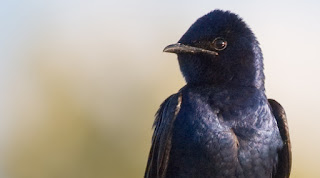This isn't a new book, but it's new to me and one of the books I received for Christmas, so it might be one that will be useful to others.
This isn't what I would call a hard-core birding book, unlike Pete Dunne's Essential Field Guide Companion (2006), which is squarely in the experienced category. This relatively short book is aimed more at those newer to the hobby, but certainly, there are some pointers that even more experienced birders could use a reminder about.
Many people start their birding journey with a field guide (which you do need), but those can be overwhelming for new birders. They contain hundreds of birds, many of which look a whole lot alike.
What this book does is focus birdwatchers on non-field guide identification clues. Sometimes, I'll be out with people and a bird may just flash by, and I can identify it. That seems like I am a real expert, but in most cases, I have watched a bird enough to pick out some aspect of the bird that tells me what it is, and sometimes, it is not a field mark shown in a field guide. The overall impression of a bird, referred to as "jizz" (an unfortunate term in current times), can allow a very quick identification. Where it is, its size, how it walks or flies, and certain easily visible field marks all help pull up an accurate ID fairly quickly.
However, when we are getting started, or if you are in an unfamiliar area, a more methodical approach is helpful. Usually field marks are not the most helpful clues until you can narrow the possibilities. Pete Dunne provides a framework to approach field identification.
Habitat is important. Not every bird will be in every habitat. Even if it is the right habitat, it might not be the right time of year. Then, what type of bird is it? If it's a duck-type birds, you can rule out a lot of possibilities and focus just on birds that are ducks, geese, and similar-appearing birds. How big is it? Compare it to some other bird you're familiar with. It's hard to identify size in inches, but you can probably say "It's smaller than a mallard." Again, that narrows your choices, giving you a manageable number to work with.
Now you look for field marks to find the bird you've observed. He doesn't get into this, but it does take practice to try to pick out the most useful field marks quickly. It's likely you won't have much time to look for them, so you get what you can. Songs and calls also can be useful.
Even with a good process, you can still misidentify a bird. I do it. Pete Dunne admits he does it. If bird identification was easy, birding would not be as challenging and interesting. But if you want to improve your odds, consider getting a copy of this book.
Good birding!



.jpg)


